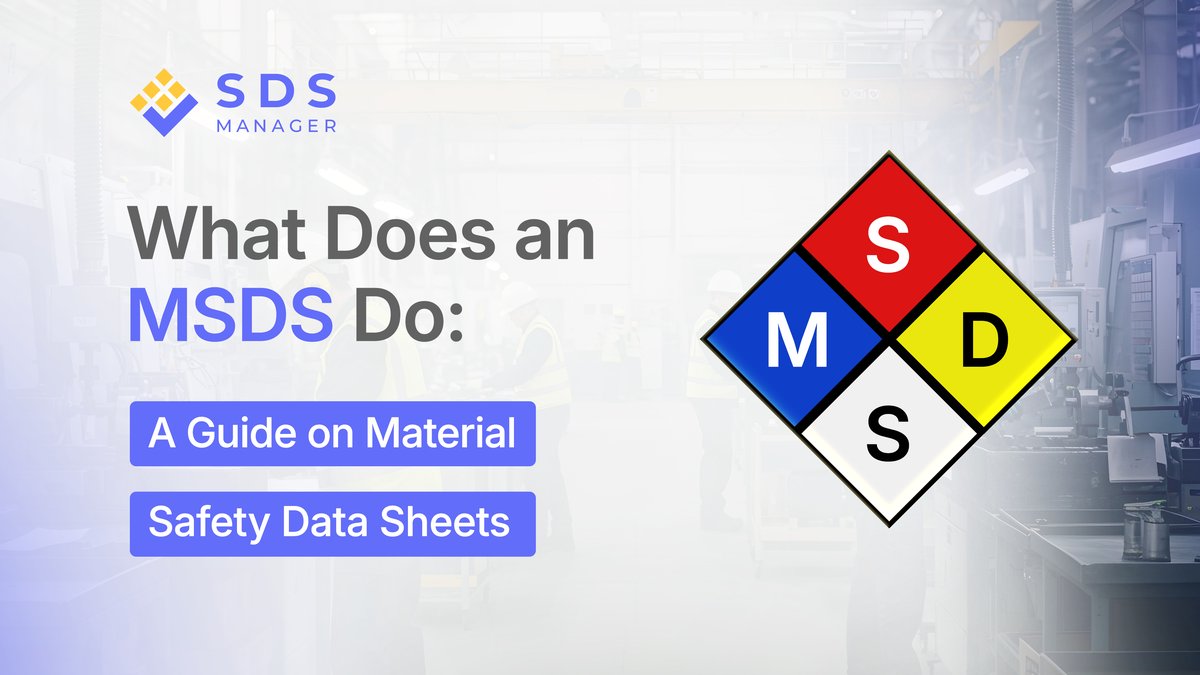

Material Safety Data Sheets (MSDS) are documents that share important chemical safety details with both employers and workers. Their main purpose is to help anyone handling chemicals understand the hazards and follow the right safety steps.
Structure of an MSDS
Material Safety Data Sheets (MSDS) are designed to protect employees, contractors, and emergency personnel (paramedics or firefighters). They explain what a chemical is, its possible effects, how to use and store it safely, how to dispose of it, and what to do in case of an accident or exposure. All this information is neatly organized into different sections for easy reference.
There is no single global standard for MSDSs. Their format usually includes anywhere from 8 to 16 sections, depending on the country or the manufacturer. For example, Canada commonly used a 9-section format.
| Section | Description |
|---|---|
| Product Information | Lists the product name, manufacturer or supplier, address, phone number, and emergency contact details. |
| Hazardous Ingredients | Identifies the hazardous chemicals in the product and their concentrations. |
| Physical Data | Describes the product’s physical properties, such as appearance, odor, boiling point, melting point, and density. |
| Fire or Explosion Hazard Data | Provides information on fire risks, flammability, suitable extinguishing methods, and special firefighting instructions. |
| Reactivity Data | Explains how the product reacts with other substances, including conditions or materials to avoid. |
| Toxicological Properties | Details the health effects of exposure, including symptoms, routes of entry, and long- or short-term effects. |
| Preventive Measures | Outlines safe handling, storage, and protective equipment needed to reduce risk. |
| First Aid Measures | Gives clear steps for providing first aid in case of exposure, inhalation, ingestion, or skin/eye contact. |
| Preparation Information | States who prepared the MSDS and the date it was created or last revised. |
Some MSDSs may also include ecological, disposal, and transportation information, although these are more commonly found in safety data sheets (SDS).
What Does MSDS Do in Practice?
An MSDS functions as a multi-purpose safety and compliance document. Here's how it helps organizations:
- Works as a Training Resource: They are used during safety training to teach workers about chemical hazards and safe practices.
- Acts as an Emergency Reference: In the event of a spill or exposure, MSDSs provide quick instructions for first aid, firefighting, and cleanup, which can help prevent injuries and further harm.
- Assists Compliance and Audits: Many industries require a complete MSDS library by law. Inspectors may review these during audits to check for compliance.
- Helps with Risk Assessment: Environmental Health and Safety (EHS) professionals use MSDSs to assess chemical risks, choose the right personal protective equipment (PPE), and set up workplace controls.
MSDS vs. SDS: Why the Difference Matters
While many countries now require SDSs under regulations like the Hazardous Products Act (HPA) in Canada, MSDSs are still used by some smaller organizations, older systems, and in places that haven’t adopted the Globally Harmonized System (GHS). MSDS formats can vary a lot, making them less consistent and sometimes harder to read or access. SDSs follow a fixed 16-section format under GHS, while MSDSs may look different depending on the supplier, country, or industry.
Ensuring a safe workplace environment
Whether an MSDS or SDS is referred to, the main goal remains unchanged: to share crucial chemical hazard information with those who need it most to ensure workplace safety and compliance.